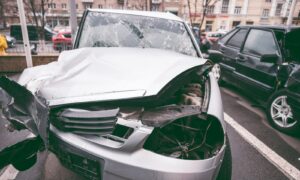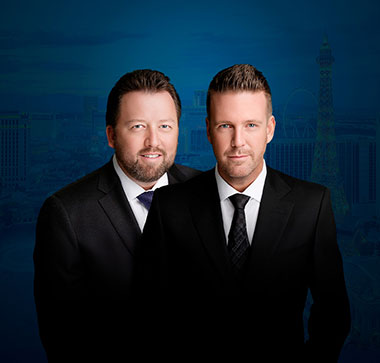In one recent year, 37,461 people died in motor vehicle accidents on U.S. roads, an increase of 5.6 percent over 2015. Even with more accessibility of active safety features such as blind spot warning and forward collision mitigation, crashes and crash injuries have continued to increase each year. Fatal crashes increased 8.4 percent from 2014 to 2015, the highest per year increase since a 9.4 percent increase from 1963 to 1964.
If you or a loved one has been involved in a crash recently and are struggling to make ends meet? learn what the experienced car accident attorneys at Benson & Bingham can do for you.
Causes of Head-On Crashes

- A speeding driver who loses control of his or her vehicle.
- A driver involved in a police chase.
- A driver under the influence of drugs, alcohol or other chemical substances.
- Traveling the wrong way on a one-way street or highway.
- A medical emergency.
- When the driver is distracted by a phone or other device, fiddling with the stereo, looking at kids fighting in the rear seat, or even turning his or her head to speak to someone in the passenger seat.
Head-on wrecks can take place on a two-lane road or a highway if someone is driving the wrong way. for more info on the causes of collisions check here.
Injuries Caused by Head-On Wrecks
In a head-on collision, the body of a vehicle’s occupant continues forward unless restrained by a seatbelt, airbag, or other safety features. Even when these safety devices do their job, head-on collision victims can still suffer severe injuries including:
- Death.
- Traumatic brain injuries. When your vehicle stops, the force of your forward speed continues to move your body forward. It does the same thing to your brain. A sudden stop causes your brain to rebound against the inside of your skull, tearing tissue and damaging nerve connections. The movement may cause a minor concussion or severe traumatic brain injuries that could cause you to be in a coma.
- Neck injuries. When your head jerks forward and backward as a result of a head-on crash, you could injure ligaments, discs, nerve roots and the intervertebral joints in your neck. These injuries are collectively known as whiplash.
You could also suffer from other injuries, which might seem minor in comparison to those listed above, but still cause extreme pain and major inconvenience, including broken bones, cuts, scratches, bruises, soft-tissue injuries such as muscle strains, sprains and pulls, or even back injuries.
Safety Features and Lives Saved

According to the NHTSA, in 2016, 14,668 lives were saved when people 5 years old and older wore seat belts. Front airbags used when a passenger who was 13 years old and older saved 2,756 people. When children 4 years old and younger used child restraints, another 328 lives were saved. Motorcycle helmets saved 1,859 lives. The minimum drinking age laws saved 552 lives.
Nationwide, 90.1 percent of the people in vehicles use seat belts. If 100 percent of the drivers and passengers used seat belts in 2016, an additional 2,456 lives would have been saved. If seat belt use increased by just 1 percent, an additional 240 lives could have been saved. Of the 5,286 motorcyclist fatalities in 2016, 2089 or 41 percent did not have helmets. It is unknown as to how many of these crashes were head-on crashes.
Crash-Type Statistics
According to the Insurance Information Institute, there were 3,511 fatal head-on wrecks in 2016. That is 10.2 percent of the fatal crashes in 2016. Additionally, people died in 10,426 fatal crashes when they hit fixed objects, though the Insurance Information Institute does not say whether these crashes were head-on type of auto accident. This is 38 percent of the total number of fatal accidents in 2016.
- Crashes with a post or a pole killed 1,416 people.
- Wrecks with a culvert, ditch or a curb caused 2,516 deaths.
- Collisions with shrubs and trees caused 2,585 deaths.
- Crashes with guard rails killed 896 people.
- Wrecks with embankments killed 947 people.
- Collisions with bridges caused 231 deaths.
- Crashes with an unknown stationary object killed 1,835 people.
Crashes with non-stationary objects also caused deaths, and some might have been head-on collisions, though the Insurance Information Institute does not have those statistics. Non-stationary objects include parked vehicles, animals, pedestrians, pedal cyclists, and trains. An additional 21.6 percent or 7,428 people died as a result of crashes with non-stationary objects.
Compensation for Head-On Wrecks

Head-on collisions can cause severe injuries and death. When those collisions result from someone else’s careless or reckless actions, victims who sustain injuries can seek compensation through the legal process. Compensation that you may recover for injuries you suffered in a head-on collision includes medical expenses, lost wages, pain and suffering, loss of consortium, loss of companionship and inconvenience. In some limited cases, you might also have the right to recover punitive damages.
How do you know if you have the right to take legal action for your injuries after a head-on collision in Nevada? The advice of an experienced car accident attorney can help you learn more.
LISTEN TO THE PODCAST VERSION OF THIS ARTICLE
Benson & Bingham Accident Injury Lawyers, LLC
626 S 10th St
Las Vegas, NV 89101
702-382-9797

